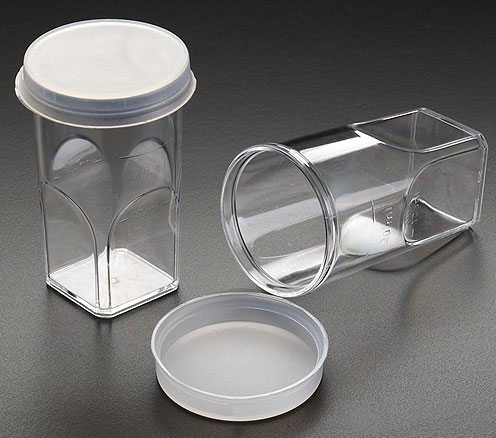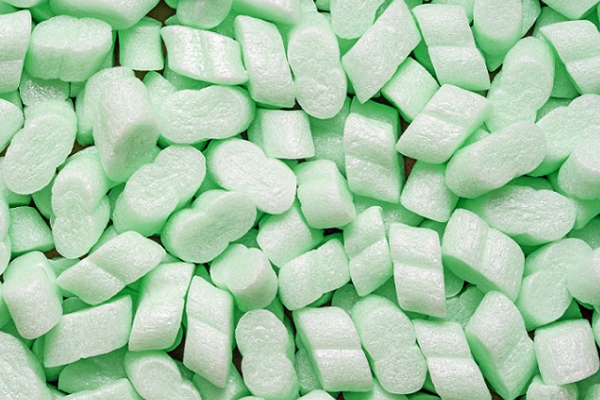Polystyrene Moulding: Definition, Materials, Applications

What is Polystyrene?
Polystyrene(PS) is a versatile synthetic polymer derived from the monomer styrene. It is widely used in various forms, including solid, foam, and expanded foam, commonly recognized as Styrofoam. Polystyrene is renowned for its lightweight, rigid, and insulating properties. Its versatility enables it to take on diverse shapes, making it suitable for applications such as packaging, disposable containers, insulation, and even consumer products like toys and electronic casings. However, it’s worth noting that polystyrene is not biodegradable and can have environmental concerns, particularly when used in disposable products. Efforts are being made to develop more sustainable alternatives and recycling methods for polystyrene materials.
What is Polystyrene Moulding?
Polystyrene moulding, a versatile and widely employed manufacturing process, involves shaping and forming polystyrene material to create a multitude of products. This process, driven by heat and pressure, transforms polystyrene resin into an array of shapes and sizes, offering flexibility and adaptability for diverse applications. Polystyrene moulding encompasses both solid and foam variations, catering to the specific needs of various industries, including packaging, construction, electronics, and consumer goods. Known for its lightweight, rigidity, and insulating properties, polystyrene moulding plays a pivotal role in modern manufacturing, contributing to the production of items ranging from packaging materials and insulation panels to custom-designed components.
Polystyrene Moulding Process
The polystyrene moulding process is a versatile manufacturing technique used to shape and form polystyrene material into various products, both solid and foam. The process typically involves the following steps:
-
- Material Preparation:
The process begins with the preparation of polystyrene resin, which is typically in the form of granules or pellets. - Melting:
The polystyrene resin is heated in the moulding machine’s barrel, where it melts due to the combination of external heaters and the shear forces generated by a rotating screw. This melting process transforms the solid resin into a molten state. - Injection:
Once the resin is in a molten form, it is injected into a mould cavity through a nozzle. The mould is typically made of two halves (core and cavity) that come together to form the desired shape. - Cooling:
After the molten resin is injected into the mould, it begins to cool and solidify. Cooling can be accelerated through the use of cooling channels within the mould or other cooling methods. - Ejection:
Once the polystyrene has solidified and taken on the shape of the mould, the mould opens, and the part is ejected from the cavity using ejector pins or other mechanisms. - Trimming and Finishing:
In some cases, the final part may require trimming or additional finishing processes to achieve the desired shape and surface quality. - Quality Control:
The produced parts undergo quality control measures to ensure they meet design specifications and standards. - Regrinding and Recycling:
Any excess or scrap polystyrene material can be reground and recycled to reduce waste.
- Material Preparation:
Advantages of Polystyrene Moulding
Polystyrene moulding offers several advantages that make it a preferred manufacturing process in various industries. Some key advantages include:
-
- Lightweight:
Polystyrene is inherently lightweight, making it ideal for applications where weight is a critical factor, such as packaging and transportation. - Insensitivity to Moisture:
Polystyrene is relatively insensitive to moisture, making it suitable for applications where exposure to humidity or moisture is a concern. - Insulating Properties:
Expanded polystyrene foam, in particular, has excellent thermal and sound insulation properties, making it suitable for construction and packaging materials. - Reduced Tooling Costs:
The use of aluminum or soft steel moulds in polystyrene moulding can reduce tooling costs compared to traditional hardened steel moulds. - Speed and Efficiency:
Polystyrene moulding can achieve fast production cycles, which is advantageous in industries with time-sensitive demands. - Versatility:
Polystyrene moulding can create a wide range of products with diverse shapes and sizes, making it suitable for various applications across different industries. - Cost-Effective:
It is a cost-effective manufacturing method, particularly for producing large quantities of parts. The materials used are often affordable, and the process itself is efficient. - Design Flexibility:
Polystyrene moulding allows for intricate and complex part designs. It can produce both solid and foam products, offering design flexibility to meet specific requirements. - Consumer Safety:
Polystyrene is considered safe for food contact, making it suitable for packaging materials used in the food industry.
- Lightweight:
These advantages collectively make polystyrene moulding a versatile and valuable manufacturing process in industries ranging from packaging and construction to electronics and consumer goods. However, it’s essential to balance these advantages with environmental considerations and explore sustainable practices in polystyrene moulding.
Limitations of Polystyrene Moulding
While polystyrene moulding offers several advantages, it also has some limitations and challenges that need to be considered:
-
- Environmental Concerns:
One of the most significant limitations of polystyrene moulding is its environmental impact. Polystyrene is not biodegradable, and it can persist in the environment for a long time. Improper disposal and littering of polystyrene products contribute to pollution. - Susceptibility to Heat:
Polystyrene has a low melting point, which means it can deform or melt when exposed to high temperatures. This limitation restricts its use in applications where high-temperature resistance is required. - Brittleness:
Solid polystyrene can be brittle, which may limit its use in applications where flexibility and impact resistance are crucial. - Limited UV Resistance:
Polystyrene can degrade when exposed to ultraviolet (UV) radiation from sunlight over time. This makes it less suitable for outdoor applications without additional protective coatings or treatments. - Flammability:
Polystyrene is flammable and can ignite easily. Flame-retardant additives are often used to address this limitation when fire safety is a concern. - Limited Chemical Resistance:
Polystyrene may not be suitable for applications where it comes into contact with certain chemicals, as it can be prone to chemical degradation. - Alternatives and Sustainability:
In an era of growing environmental awareness, there is a push for more sustainable materials and manufacturing processes, which may lead to a reduced reliance on polystyrene in some applications.
- Environmental Concerns:
To address these limitations, there is ongoing research and development aimed at improving the sustainability of polystyrene materials and finding eco-friendly alternatives in various industries.
Types of Polystyrene Materials
Polystyrene is a versatile plastic material. Each type has unique properties that make it suitable for specific applications, ranging from rigid and clear GPPS to the foam-like insulation provided by EPS and XPS, and the impact resistance offered by HIPS and ABS. The choice of which type to use depends on the requirements of the particular application. The following is a detailed introduction to some common polystyrene materials:
General-Purpose Polystyrene (GPPS):
This is the most common type of polystyrene. It is a rigid and transparent plastic. GPPS is commonly used in disposable cutlery, CD cases, and various packaging applications.
Expandable Polystyrene (EPS):
EPS is a foam plastic made from polystyrene beads. It is known for its lightweight and insulating properties. EPS foam is used in packaging materials, insulation boards, and in the construction industry.
Polystyrene Foam (PS Foam):
PS foam is used to create foam products like disposable plates, cups, and food containers. It is lightweight and an excellent insulator, making it suitable for keeping hot foods hot and cold foods cold.
High-Impact Polystyrene (HIPS):
HIPS is a modified form of polystyrene that has improved impact resistance. It is less brittle than GPPS and is used for applications where durability and toughness are important, such as in the production of toys, refrigerator liners, and automotive parts.
Extruded Polystyrene (XPS):
XPS is another type of foamed polystyrene with high insulating properties, but it has a more closed-cell structure compared to EPS, making it highly resistant to moisture. XPS is used for thermal insulation in buildings, as well as in applications like roofing and underfloor insulation.
Crystal Polystyrene (CPS):
CPS is a high-grade, clear polystyrene that offers excellent optical properties and transparency. It is often used in applications requiring optical clarity, such as optical lenses, lab equipment, and medical devices.
Acrylonitrile Butadiene Styrene (ABS):
ABS is a copolymer of styrene and acrylonitrile with polybutadiene. While it’s not pure polystyrene, it’s closely related and is known for its toughness, making it suitable for applications like automotive parts, toys, and consumer electronics.

Applications of Polystyrene Products
Polystyrene moulding offers a multitude of applications across industries, driven by its cost-effectiveness, versatility, lightweight properties, and the ability to create custom-designed components. Let’s explore specific applications and benefits in some key sectors:
Packaging Industry
-
- Polystyrene is extensively used for packaging fragile and sensitive items, including electronics, glassware, and food products.
- Advantages:
Its lightweight nature cushions and protects products during transit, and its insulating properties help maintain temperature-sensitive contents.
Construction and Building Materials
-
- Expanded polystyrene (EPS) foam is employed in construction for insulation panels, roofing, decorative architectural elements, and as a lightweight fill material.
- Advantages:
EPS provides exceptional thermal insulation, reduces energy consumption, and contributes to sustainable building practices.
Electronics and Appliances
-
- Polystyrene moulding is used to manufacture casings, enclosures, and components for various electronic devices and appliances.
- Advantages:
Its rigidity, lightweight nature, and ease of customization make it ideal for protecting and housing sensitive electronic components.
Consumer Goods
-
- Polystyrene is used to create consumer products like toys, kitchenware, and cosmetic containers.
- Advantages:
It offers design flexibility, cost-effectiveness, and the ability to produce lightweight and durable items.
Food Service Industry
-
- Disposable food containers, cups, and trays are often made using polystyrene.
- Advantages:
Polystyrene containers are lightweight, provide excellent insulation, and are convenient for both consumers and food service providers.
Medical and Healthcare
-
- Polystyrene can be found in medical packaging, laboratory equipment, and diagnostic devices.
- Advantages:
Its clean, sterile properties and ease of molding make it suitable for healthcare applications.
Automotive Industry
-
- Polystyrene is used for interior components, such as instrument panels and trim pieces.
- Advantages:
Its lightweight nature contributes to improved fuel efficiency, and it can be molded into complex shapes for interior design.
Arts and Crafts
-
- Polystyrene foam is popular in arts and crafts for creating sculptures, models, and decorative elements.
- Advantages:
Its ease of carving, painting, and shaping makes it a versatile material for artistic projects.
Marine Industry
-
- Polystyrene foam is used for buoyancy aids and flotation devices in the marine sector.
- Advantages:
Its buoyant and water-resistant properties make it suitable for marine applications.
Medical Packaging
-
- Polystyrene is used to create medical packaging for sterile products like syringes and medical instruments.
- Advantages:
Its hygienic and protective qualities are crucial for medical device packaging.
Display and Signage
-
- Polystyrene sheets and boards are employed in the display and signage industry for creating lightweight, durable signs and promotional displays.
- Advantages:
Polystyrene’s ease of printing, shaping, and affordability make it a preferred material for signage.
Get a free quote and design analysis today.
We’ll reply to you within 6 working hours.
We respect your privacy.
+86 139 2927 4777 (WhatsApp, Wechat)
